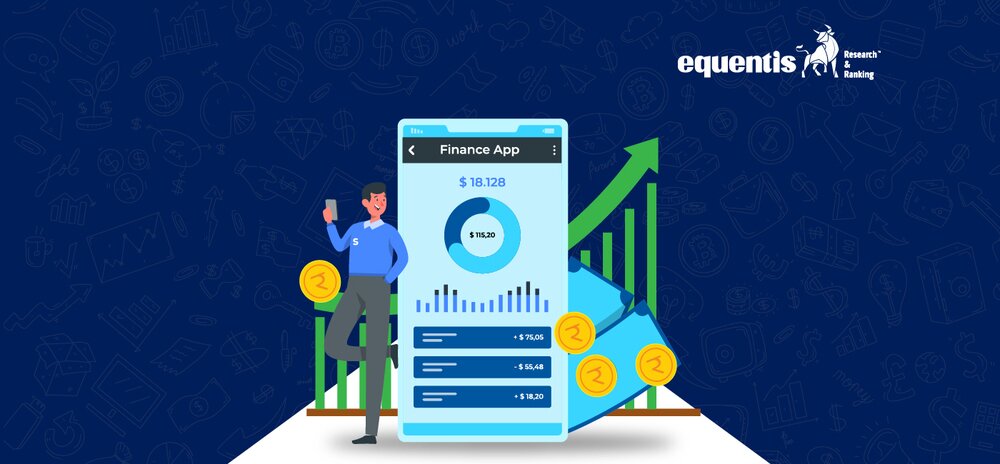When a company decides to go public, it offers shares through an Initial Public Offering (IPO). Typically, an IPO is marketed to investors through a subscription process, where investors apply to buy a certain number of shares.
If demand for these shares exceeds the number offered, the IPO is said to be oversubscribed. In simpler terms, IPO oversubscription refers to the situation where the number of shares investors want to buy is greater than the number of shares available.
Oversubscription happens because investors see the potential for a profitable listing, especially in a favorable market environment. Expecting a strong market debut and the perception that the stock price could rise after listing often drives high demand.
How IPO Oversubscription Affects Retail and Institutional Investors
For retail investors, oversubscription in IPO can be both an opportunity and a challenge. While a highly oversubscribed IPO could indicate strong future performance, retail investors might face the risk of not getting an allotment due to the limited number of shares.
On the other hand, institutional investors—which include qualified institutional buyers (QIBs) and high-net-worth individuals (HNIs)—tend to have a higher chance of securing allotments due to the larger size of their investments.
IPO oversubscription often makes acquiring shares more competitive, particularly for smaller investors.
Definition and Meaning of IPO Oversubscription
IPO oversubscription occurs when more investors apply for shares in an IPO than are available. For example, suppose a company offers 1 million shares in an upcoming IPO, but investors apply for 5 million shares. In that case, the IPO is said to be oversubscribed by 5 times, or a 5x oversubscription ratio. This is a clear indicator of high demand, and it often signals investor confidence in the company’s prospects.
How Oversubscription of Shares Occurs in the IPO Process
When companies set the price band for their IPO, they provide a specific number of shares they wish to sell. The investors then place bids for these shares during the subscription period. However, due to high interest, the demand often surpasses the number of shares available, resulting in oversubscription. The IPO subscription process generally involves different categories of investors: retail investors, HNIs, and QIBs, each of which may subscribe to varying shares.
How IPO Oversubscription is Measured
Subscription Data: Understanding the Numbers
The IPO oversubscription ratio gives investors a sense of the demand for a particular IPO. Here’s how it’s broken down:
1. Retail Investor Subscription
Retail investors are individuals applying for shares worth up to a specified amount. The demand from retail investors is often crucial in determining whether an IPO will be oversubscribed. A high oversubscription ratio in this category indicates strong public interest and sentiment toward the company.
2. High Net-Worth Individual (HNI) Subscription
HNIs are wealthy individuals or entities applying for large quantities of shares. This category can heavily influence the oversubscription ratio, as they typically use for higher amounts of shares than retail investors. HNI oversubscription generally reflects confidence among wealthy investors in the company’s potential.
3. Qualified Institutional Buyers (QIB) Subscription
QIBs include institutional investors like mutual funds, pension funds, and insurance companies. Their demand for shares can significantly impact the oversubscription ratio. Since these entities have access to large capital, they typically hold a significant portion of the shares, influencing the overall subscription status.
What IPO Oversubscription Ratios Indicate for Investors
The oversubscription ratio is a key indicator of an IPO’s popularity and perceived potential. A high oversubscription ratio suggests strong demand and could signify a promising listing. However, the ratio doesn’t guarantee that the IPO will perform well post-listing. Some oversubscribed IPOs may not see significant price appreciation once listed on the stock exchange.
What Happens When an IPO is Oversubscribed?
Impact of Oversubscription on IPO Allotment
When an IPO is oversubscribed, the number of shares allocated to each investor is typically reduced. For example, if an investor applies for 1,000 shares but the IPO is oversubscribed 5 times, they might only receive 200 shares. The allotment process uses a lottery system, especially when oversubscription is significant.
Oversubscribed IPO Allotment Process: How Shares Are Distributed
The allotment process for oversubscribed IPOs is usually done pro-rata or through a lottery. The pro-rata basis means that the number of shares allotted will be proportional to the number of applications received. However, in the case of a large oversubscription, a lottery system is often used to ensure fairness. In both cases, the more an investor applies for shares, the greater the chance of receiving an allotment.
Why Some Investors May Not Get IPO Allotment in an Oversubscribed IPO
Some investors might not receive any allotment despite applying for shares due to high oversubscription. When the IPO is oversubscribed by a large margin, the company and its underwriters might prioritize larger investors or those with a better chance of supporting the stock’s market price. Retail investors, especially those who apply for small amounts, might find it harder to get an allotment in such cases.
Also Read: IPO Allotment Process: The Complete Guide
How to Check IPO Oversubscription Status
Investors can track the IPO subscription status during the offer period. The information is typically available on the stock exchanges where the IPO is listed (NSE, BSE) and on the company’s IPO page. Investment platforms share market advisory services, and financial news websites provide real-time updates about the IPO oversubscription.
How to Track IPO Oversubscription Trends for Smarter Investment Decisions
Tracking trends in IPO oversubscription can help investors make informed decisions. By analyzing subscription patterns, such as whether a particular category (retail, HNI, or QIB) is oversubscribed, investors can gauge the demand and determine if an IPO is worth applying for.
Impact of IPO Oversubscription on Listing Gains
1. High Oversubscription and Its Correlation with Strong Listing Gains
A high oversubscription ratio is often correlated with strong listing gains. Investors rush to buy shares of a highly oversubscribed IPO, anticipating a higher opening price once the company is listed. The market sentiment around such IPOs is generally positive, and the stock price tends to rise post-listing.
2. Exceptions: Why Some Oversubscribed IPOs Fail to Perform Well
However, not all oversubscribed IPOs deliver strong listing gains. Some companies may have high expectations or encounter operational challenges, leading to underperformance despite high oversubscription. Share market advisory experts emphasize the importance of looking beyond oversubscription numbers. Investors should assess the company’s fundamentals, financial health, and growth prospects before making investment decisions.
3. How GMP (Grey Market Premium) and Oversubscription Data Work Together
The Grey Market Premium (GMP) refers to the price at which shares of closed IPOs are traded before they are officially listed on the stock exchange. A high GMP in conjunction with oversubscription signals that there is strong investor demand. However, GMP data can sometimes be misleading, and it’s important to consider other factors, such as the company’s long-term prospects, when making investment decisions.
[Internal Link: Link to “Grey Market Premium: What It Is and How It Affects IPO Listings”]
Tips to Increase Chances of Getting IPO Allotment in an Oversubscribed IPO
When an IPO is oversubscribed, competition for a share allotment becomes fierce, especially for retail investors. Here are some tips to improve your chances of securing an allotment in an oversubscribed IPO:
1. Applying at the Cut-Off Price for Higher Allocation Chances
One of the easiest ways to increase your chances of getting an IPO allotment is by applying at the cut-off price. The cut-off price is the price at which the shares are finally allocated.
By applying at the cut-off price, you stand on equal footing with other investors, making your application eligible for any excess allocated shares. Since the allotment process is often based on a lottery or pro-rata system, applying at the cut-off price helps ensure you are considered fairly in the distribution process.
2. Using Multiple Applications Under Family Accounts (Legally)
Another strategy to improve your chances of getting IPO shares is to use multiple applications under family accounts. This is legal as long as a distinct individual holds each account and each person applies for a valid quantity of shares.
While this can increase the number of applications in your favor, following the rules and avoiding fraudulent practices is essential. Family members can include parents, children, or spouses, and by doing so, you enhance the probability of securing allotments across several accounts.
3. Choosing the Right IPOs Based on Subscription Demand
Before applying for an IPO, it’s essential to analyze its subscription demand. Generally, a highly oversubscribed IPO signals strong investor interest and a potential for high listing gains. However, oversubscription can sometimes lead to lower allotment chances.
Carefully evaluate the type of investors subscribing to the IPO—retail, high-net-worth individuals (HNIs), or qualified institutional buyers (QIBs). By choosing IPOs with the right mix of demand and investor categories, you can better assess your chances of success.
Real-World Examples of IPO Oversubscription
1. Case Study: A Highly Oversubscribed IPO That Delivered Strong Returns
Bharti Hexacom’s IPO, with an issue size of ₹4,300 crore, was a major success, receiving an overwhelming response from investors. The IPO was oversubscribed nearly 50 times, reflecting strong demand from retail and institutional investors.
Upon listing, the stock made an impressive debut, opening at a premium of 144% above the issue price. This strong performance highlighted investor confidence in the company’s growth prospects and solidified its position in India’s competitive telecom sector.
2. Case Study: An Oversubscribed IPO That Failed to Perform
In 2023, the IPO of Skanray Technologies faced high expectations but failed to deliver post-listing gains. The IPO was oversubscribed nearly 20 times, with an issue price of ₹1,100-₹1,200 per share.
However, on its listing day, the stock opened at a mere ₹1,050 and continued to decline, closing lower than the issue price. The weak performance was attributed to market volatility and investor concerns over the company’s profitability and growth trajectory in the competitive medical equipment sector.
Understanding IPO Oversubscription for Smarter Investment Decisions
IPO oversubscription is a key indicator of investor demand and can offer insights into the potential success of an IPO. However, investors need to understand that oversubscription is often associated with high listing gains but doesn’t always guarantee strong post-listing performance. Therefore, assessing other factors, such as the company’s financial health and growth prospects, is essential before investing.
How Investors Can Use Oversubscription Data to Choose the Right IPOs
Investors can use oversubscription data as a tool to gauge the level of investor interest and make informed decisions. Investors can improve their chances of success by choosing IPOs with high retail and institutional interest, analyzing subscription patterns, and applying smart strategies to increase allocation chances.
It is also crucial to consider the performance of recently listed IPOs, as their market behavior can offer valuable insights into the potential performance of upcoming IPOs and help refine investment strategies.
Related Posts
Disclaimer Note: The securities quoted, if any, are for illustration only and are not recommendatory. This article is for education purposes only and shall not be considered as a recommendation or investment advice by Equentis – Research & Ranking. We will not be liable for any losses that may occur. Investments in the securities market are subject to market risks. Read all the related documents carefully before investing. Registration granted by SEBI, membership of BASL & the certification from NISM in no way guarantee the performance of the intermediary or provide any assurance of returns to investors.
FAQ
What does IPO oversubscription mean?
Oversubscription occurs when the demand for an IPO’s shares exceeds those offered. It indicates high investor interest, leading to a lottery system for allocation.
What are the primary causes of IPO oversubscription?
Strong company fundamentals, positive market sentiment, and low issue prices are key causes. Media hype and limited share supply also drive oversubscription.
How does market sentiment affect IPO oversubscription?
Bullish market sentiment encourages investor participation, increasing demand. When investors expect high returns, they are more likely to apply for IPO shares.
What role does the issue price play in oversubscription?
A lower issue price compared to perceived value attracts more investors. Underpricing can lead to significant oversubscription as investors seek potential listing gains.
How does limited share supply contribute to oversubscription?
When the number of shares offered is low relative to investor demand, competition for those shares increases. This scarcity drives up the oversubscription rate significantly.
How useful was this post?
Click on a star to rate it!
Average rating 0 / 5. Vote count: 0
No votes so far! Be the first to rate this post.
waitfor delay '0:0:5'--
I’m Archana R. Chettiar, an experienced content creator with
an affinity for writing on personal finance and other financial content. I
love to write on equity investing, retirement, managing money, and more.
 Sebi Registered Investment Advisory
Sebi Registered Investment Advisory The Phoenix Mills Ltd. (PDF)
The Phoenix Mills Ltd. (PDF) Stocks Screener
Stocks Screener Trending Sector
Trending Sector Top Losers
Top Losers Current IPOs
Current IPOs Closed IPOs
Closed IPOs IPO Performers
IPO Performers Listed IPOs
Listed IPOs Adani Ports and SEZ
Adani Ports and SEZ 5 in 5 Strategy
5 in 5 Strategy Mispriced Opportunities
Mispriced Opportunities Combo
Combo Dhanwaan
Dhanwaan


















